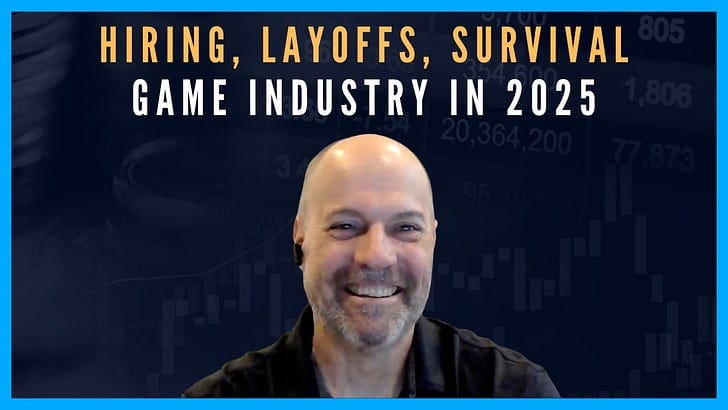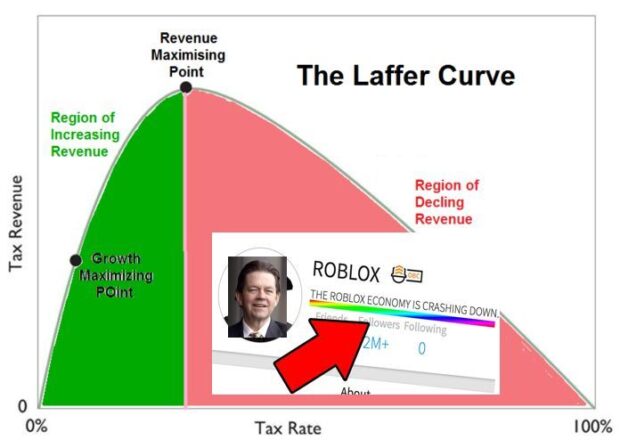
Hiring, Layoffs, and Surviving the Game Industry’s Reset
Journal 11 Joseph Kim August 21
As an old-timer in the games industry, I’ve seen cycles come and go. But the current downturn feels different—prolonged, painful, and amplified by emerging tech like AI.
There seems to have been a fundamental shift in the environment in which we work and compete.
Is this time different?
Today’s discussion focuses on many of the new macro forces impacting the games industry, including layoffs, getting hired, staying employed, AI, work culture, and more!
The State of Play: A Cyclical Downturn with a Twist
It’s tough out there. Keith confirms that the market is in a cyclical decline after a post-COVID boom, but with some unique characteristics. Larger studios are aggressively cutting costs by shuttering projects and entire studios, while many independent developers have seen their funding dry up.
The result is a market focused on the perception of sure bets—games that are “absolutely guaranteed to be successful” in the minds of executives.
While predictable V-shaped recoveries have followed past downturns, this time feels different. However, Keith sees a potential uptick on the horizon within the next one to two years. The logic? Major players like Sony and Xbox have thinned their portfolios so much through recent cuts that they will soon need to aggressively fill their content pipelines, creating opportunities for acquisitions and publishing deals.
The Job Seeker’s Playbook: How to Stand Out in a Crowded Field
For the thousands of talented individuals recently laid off, the path forward can seem daunting. Keith’s advice is clear, practical, and focuses on proactive, personal strategies over blindly submitting applications into the void.
1. Your Network is Your Most Valuable Asset. This was Keith’s most emphatic point. The vast majority of opportunities will come from the relationships you’ve built. An algorithm won’t find you, but a former colleague who trusts your work will.
- The Personal Touch: Ditch the mass LinkedIn blasts. Focus on one-on-one, personal outreach to people you genuinely know and have worked with. It’s not just about asking for a job; it’s about reconnecting and staying top-of-mind.
- Warm Introductions: A referral from a trusted connection is the surest way to get a recruiter or hiring manager to give your resume a serious second look. It doesn’t guarantee an interview, but it gets your foot in the door.
2. Build Your Digital Portfolio. In an age where AI can generate flawless resumes and cover letters, you need to prove your skills in other ways. I’ve seen this firsthand: we once hired a game designer specifically because of an extremely in-depth YouTube video where he broke down another game’s systems.
- Create a digital footprint that showcases your thought process. This could be a blog, a portfolio website with personal projects, or insightful social media posts. It’s your chance to show, not just tell, and it helps hiring managers de-risk their decision.
3. Master Your Resume’s Narrative. Your resume isn’t a list of job duties; it’s a highlight reel of your impact.
- Answer “So What?”: For every point on your resume, explain the value you drove. Don’t just say you worked on a system; quantify its impact.
- Be Prepared to Back It Up: While quantifying impact is crucial, be honest. In an interview, I will always ask, “You say you increased conversion by 40%. Walk me through exactly how you did that.”. If you can’t provide a detailed, credible narrative, your integrity is immediately shot.
A Note on Ageism: For industry veterans, there’s a growing fear of being perceived as “overqualified” or too expensive. Keith acknowledges that ageism exists but argues that many senior-level layoffs are driven by cost-cutting, as senior roles are the most expensive. The key is to continuously demonstrate your value and adapt your skills to the current market, ensuring you haven’t become stagnant after years at one company.
The Employer’s Dilemma: Hiring in the Age of AI
As a hiring manager myself, I can attest that evaluating candidates has become incredibly difficult. AI often completes written tests, and live interview aids like Cluely can feed candidates polished, real-time answers. So how do we find authentic talent?
- Move Beyond the Written Test: The pre-interview test is becoming obsolete. Instead, consider incorporating practical, real-time problem-solving into the interview itself, like a live whiteboarding session.
- The In-Person Litmus Test: For final-round candidates, especially for senior roles, flying them in for a day to work alongside the team on a real (but already solved) problem can be invaluable. It tests collaboration, thought process, and culture fit in a way no video call can.
- Probe for Specificity: AI-generated answers tend to be general and polished. The best defense is to dig deep with follow-up questions. Ask for specific, detailed examples from their past work. An AI can’t convincingly fake the nuance and narrative of lived experience.
- Keith’s Go-To Question: “Walk me through one of your biggest failures at work.” This question isn’t about the failure itself, but what the candidate learned from it and how they applied that lesson going forward. It reveals self-awareness, resilience, and a capacity for growth—qualities AI can’t replicate.
The Future of Work: AI, Outsourcing, and the Battle for Balance
The conversation inevitably turned to the future, dominated by AI and shifting work cultures.
AI’s Impact on Jobs: While some roles, such as data entry and basic customer service, are at immediate risk, Keith believes knowledge worker roles in gaming won’t disappear but will be fundamentally transformed.
- The Rise of the “Super User”: The most valuable professionals will be those who master AI tools to augment their skills, making them faster and more effective. An engineer who uses AI to check code and automate repetitive tasks can focus on higher-level problem-solving.
- The Looming Skill Gap: A critical long-term risk is that by automating entry-level tasks, we may prevent the next generation of leaders from developing foundational skills and “scar tissue.”. How do you learn what “good” looks like if you’ve never done the work yourself? Businesses must intentionally design new learning pathways.
The Production Model Shift: Keith speculates that the industry may increasingly adopt a “movie-making model,” with a small core creative team outsourcing large portions of development. While this is cost-effective, it risks breaking up the cohesive, long-standing teams that have historically shipped the most successful games.
The Work Ethic Standoff: The rise of highly successful games from regions with a “996” (9 am to 9 pm, 6 days a week) work culture has created a tense debate. Many Western developers value work-life balance and are unwilling to compete on those terms. Keith frames this as a series of personal and business choices. There are consequences to every decision, but he maintains that the goal should be to make great, successful games without burning out your employees, because “game making should be fun”.
Ultimately, navigating this new era requires a dual focus: individuals must become lifelong learners, leveraging their unique human skills of creativity, judgment, and relationship-building while mastering new AI tools. Companies, in turn, must be more strategic than ever in how they identify, cultivate, and retain talent, recognizing that their people are the ultimate defense against commoditization in an increasingly automated world.







